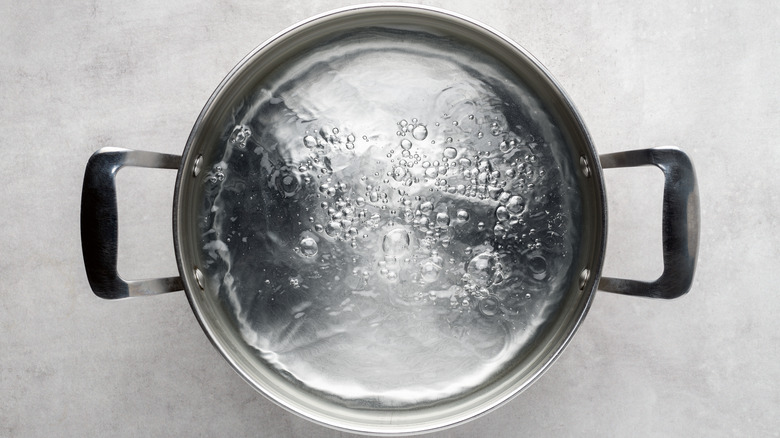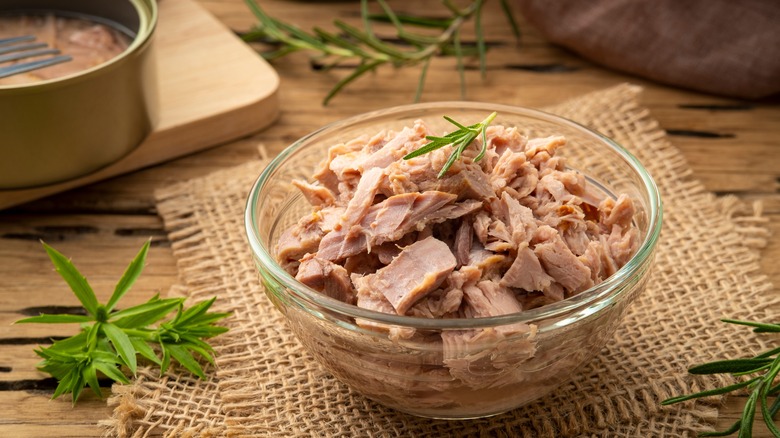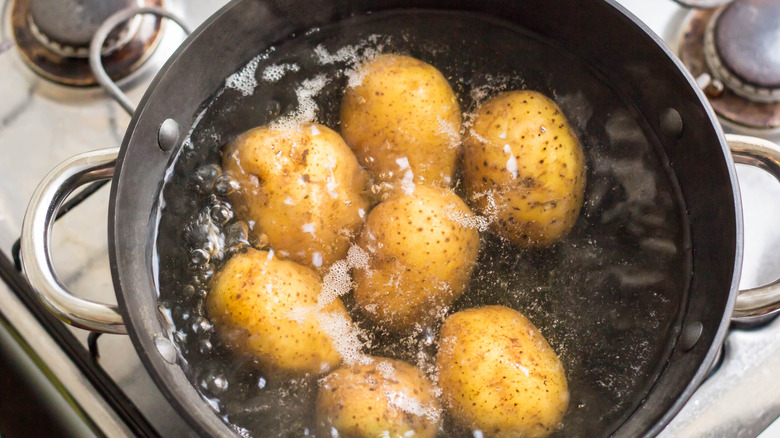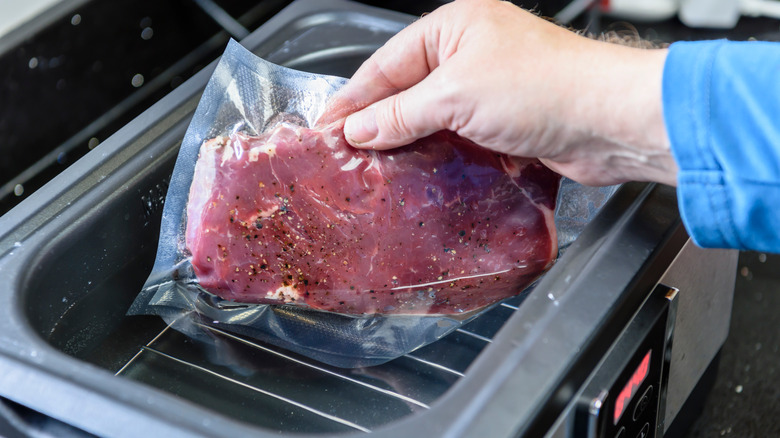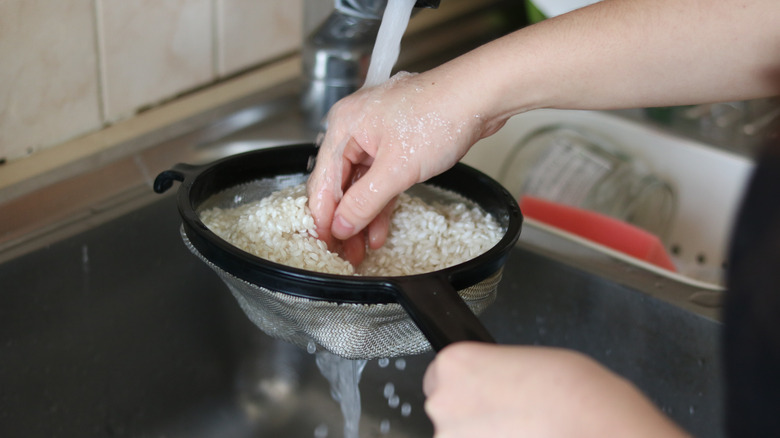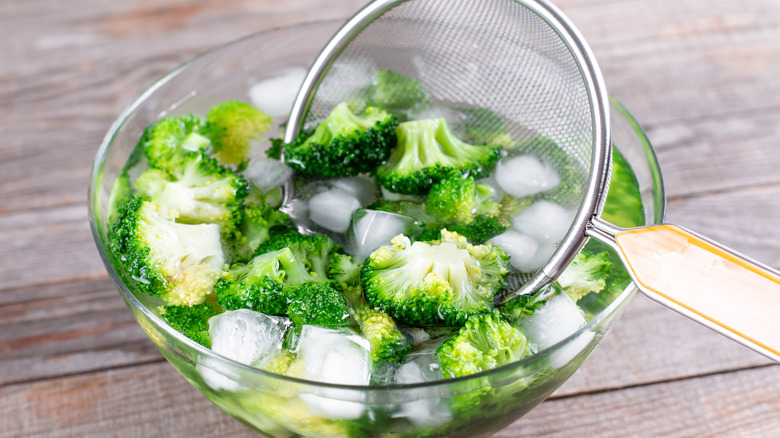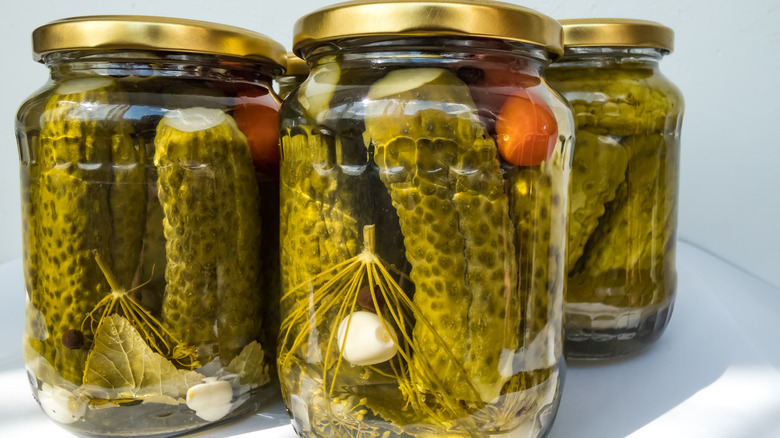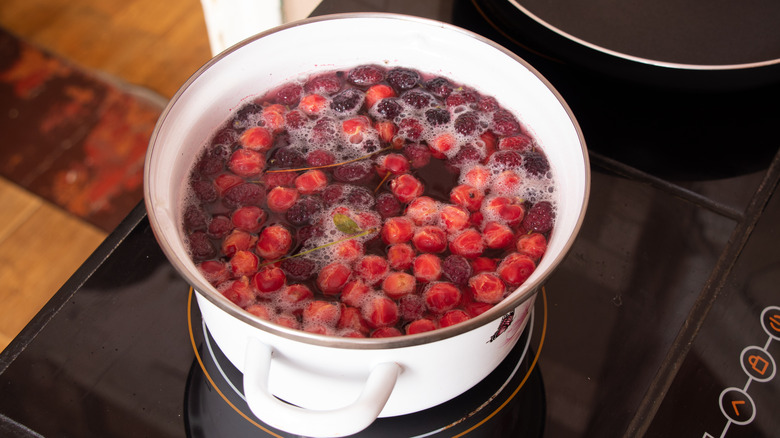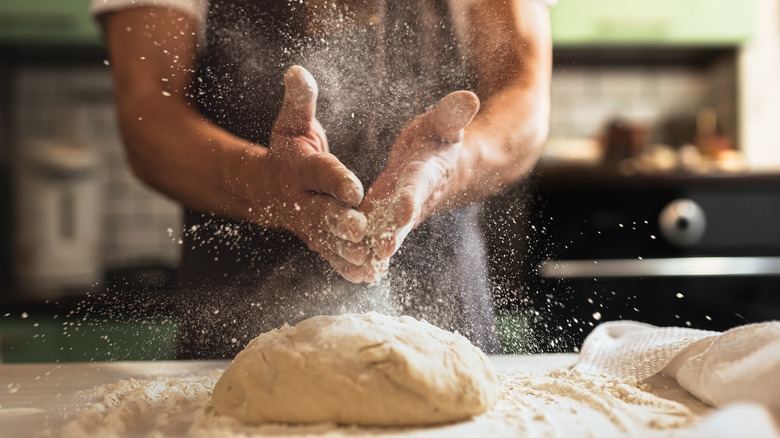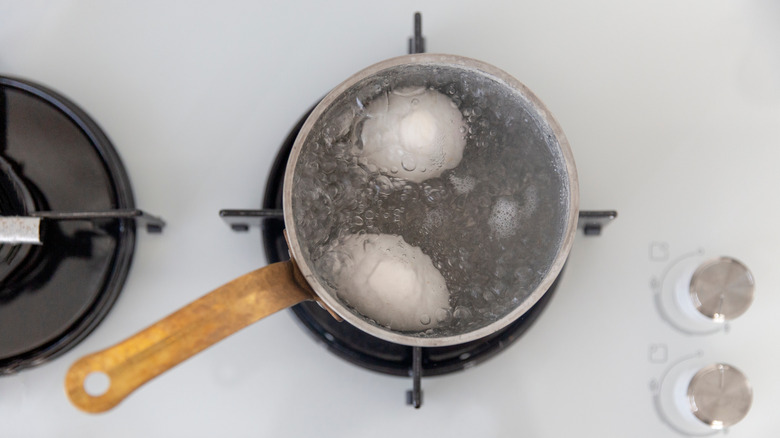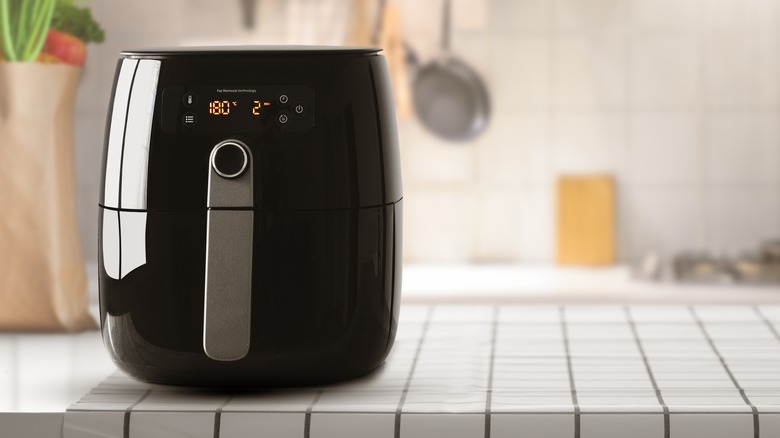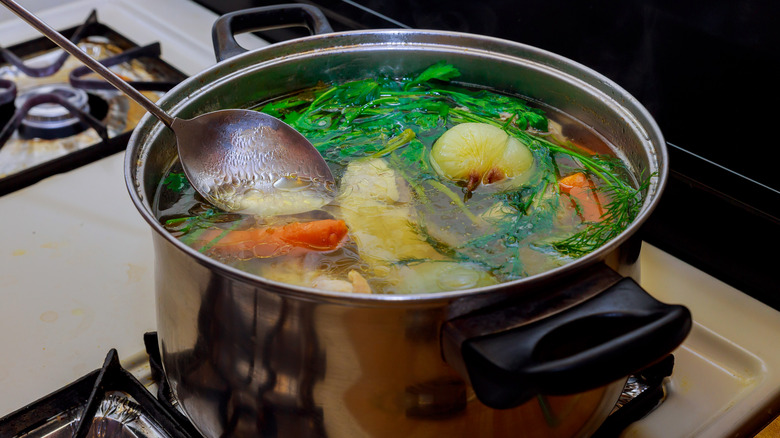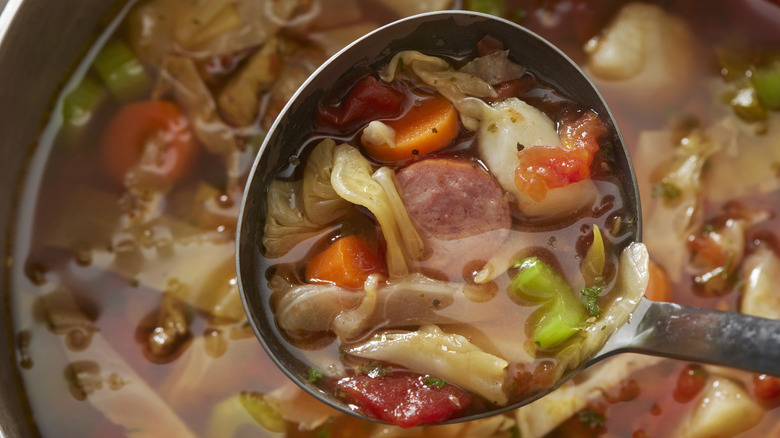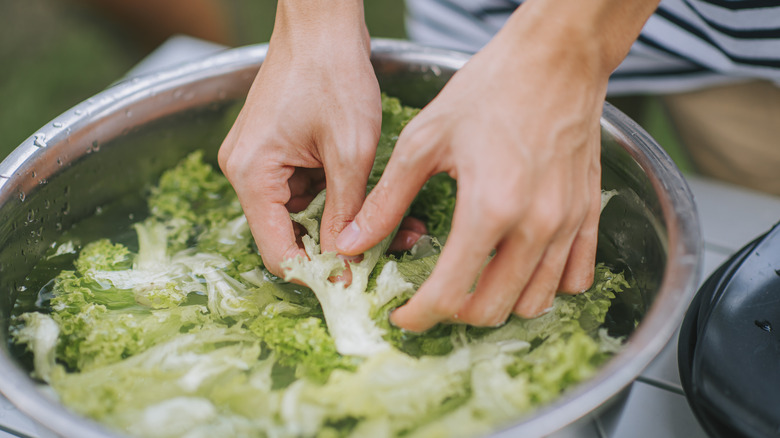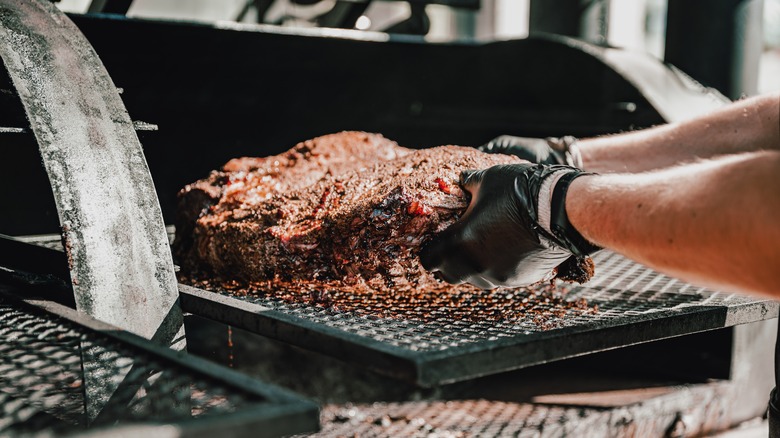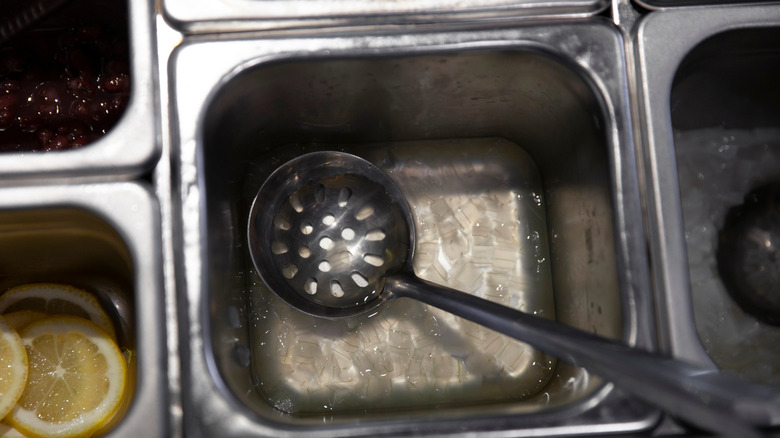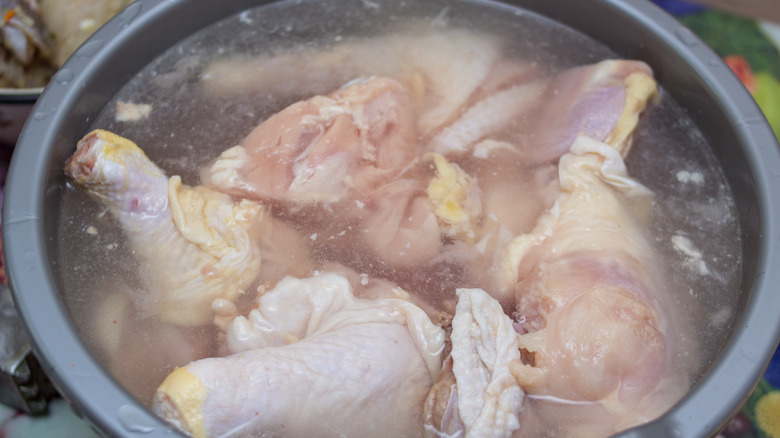16 Ways Water Is More Than Just An Ingredient In Your Cooking
Water is the most essential ingredient in any kitchen. It is vital for cooking food, cleaning up, and ensuring safety and hygiene. However, water plays so many more important roles in cooking beyond just being a basic ingredient.
Imagine a simmering pot of your favorite stew. You can almost taste the flavors melding together, the spices dancing in harmony with the meat and vegetables. What's often forgotten is the silent orchestra conductor of this culinary symphony: water. It's more than just a medium in which flavors dissolve; it carries, enhances, and marries flavors together, creating depth and complexity.
In baking, water isn't just a humble ingredient. It activates yeast, helps in gluten formation, and contributes to the moistness of cakes, breads, and pastries. It helps control the temperature and consistency of dough and batter. Even in its different forms — steam, ice, or liquid — water is a versatile tool in the kitchen. It can change the texture of food, help preserve color, aid in the creation of sauces, and even influence the cooking time. But often, these diverse roles of water in cooking are overlooked.
Water can help tenderize meat
Water is essential for cooking in many ways beyond just boiling vegetables or making soups and stews. One of the most useful applications of water in cooking is using it to help tenderize and soften meat. As meat cooks, the heat causes the proteins in the meat to tighten and squeeze out moisture (per The Culinary Pro). When the meat is exposed to moisture as it cooks, such as basting it in its own juices or adding extra water, it helps the meat retain more moisture and stay softer.
There are a few methods you can use to harness the power of water for tenderizing meat. Brining, which means soaking meat in a saltwater solution, uses water to help tenderize meat. The salt in the brine seasons the meat all the way through, and the water keeps it tender. Brining is especially useful for lean meats like chicken breast or pork chops that can easily dry out during cooking. The brining process allows the meat to absorb moisture before it ever hits the heat.
Cooking food in water adds moisture
Moisture plays a pivotal role in determining the texture, taste, and overall quality of our food. Simply boiling or steaming vegetables, rice, or eggs in water helps these foods retain more moisture compared to other dry-heat cooking methods. When food is submerged or exposed to boiling water during cooking, the water helps trap steam and condensation around the food. This helps the food stay soft and juicy instead of drying out.
One simple way to add moisture to food while cooking is through boiling. Plunging food like potatoes, carrots, or beets into boiling water helps the food retain its own juices as it cooks through. The enveloping water heats the food efficiently while protecting it from drying out through loss of moisture. Most vegetables only need to boil until tender when pierced with a fork. Drain the vegetables immediately to avoid overcooking them in the residual heat.
Water is used in sous-vide cooking
Sous-vide cooking is a popular method (especially in high-end restaurants) to cook food with incredible precision. Sous vide involves sealing food in an airtight plastic bag and cooking it in a water bath at a controlled temperature. The hot water transfers heat to the food slowly and gently, allowing it to cook evenly and retain more moisture compared to traditional methods. Sous-vide cooking requires the use of an immersion circulator, which is a device that precisely controls the temperature of a water bath.
Cooking the food in a hot water bath at a very consistent, precise temperature is what sets sous-vide cooking apart. The moderate, controlled heat gently and evenly brings the internal temperature of the food to the target, at which point it has been cooked to perfection. Then the food can be quickly seared to add texture and color. This results in food that is cooked exactly as desired, edge-to-edge. Some of the best foods to cook with the sous-vide technique include steak, chicken breast, carrots, lobster, and even chocolate.
Water can be used to rinse and refresh food
Even though organic produce has a reputation for being safer and healthier, it is not exempt from possible contamination. Although regulations permit the use of certain pesticides on organic crops, there's a risk of contamination through pesticide drift from conventional crops grown nearby. Bacterial exposure is another concern, as organic produce is not inherently superior to traditionally grown produce in this regard.
Therefore, washing all produce — even organically grown crops — is still essential before consumption. A quick rinse under cool running water can remove surface dirt or bacteria from vegetables and makes them safer to consume. Rinsing rice is also crucial as it not only helps to remove any potential debris, but it washes away excess starch, preventing a sticky or gloopy end result.
Unlike fresh vegetables, berries, due to their delicate nature, require careful handling while cleaning. Instead of soaking, they should be placed in a colander and rinsed under running water to prevent them from turning into mush. To avoid kitchen disappointments, like freshly-picked strawberries or raspberries falling apart during washing, chilling them in the fridge for an hour prior to washing can help them firm up and better withstand the force of running water.
Blanching vegetables in water can help retain flavor
Blanching is a cooking technique where vegetables are briefly submerged in boiling water, then plunged into ice water. Blanching vegetables before cooking them helps them retain their quality. The short burst of heat destroys the enzymes that can cause loss of color, flavor, and texture over time (per the College of Agriculture, Forestry, and Life Sciences at Clemson University). Then the ice bath stops the cooking instantly so the vegetables stay crisp and tender.
One of the important reasons for blanching some vegetables is to preserve the color of green vegetables such as green beans, broccoli, spinach, etc. When veggies are plunged into boiling water, the heat breaks down the cell walls, releasing gases trapped within. This process enhances the natural color of the vegetables.
The blanching process also loosens skins from vegetables like tomatoes, stone fruits, and nuts, allowing for easy peeling. Blanching mature produce like asparagus or green beans helps remove any bitterness and improves texture.
Water can be used for making flavorful pickling brines
From the ubiquitous dill pickles gracing our sandwiches to the tangy pickled onions enhancing our tacos, pickles have an undeniable ability to transform a meal. The pickling process involves submerging food in an acidic brine, usually containing vinegar, salt, sugar, and water. The water is essential for creating the brine that will pickle the food.
But the role of water in a pickling brine doesn't stop at simply being a mixer. The water in the brine also helps the pickles retain their crispness. When vegetables are soaked in the brine, the water in the vegetables is pulled out and replaced by the brine through osmosis, which helps maintain their firm texture (via Serious Eats).
Moreover, the water in the brine can be a vehicle for other flavors. By infusing the brine with herbs, spices, or aromatics, you can create pickles with complex and layered flavors. The water in the brine absorbs these flavors and transfers them into the pickles, creating a delicious medley of tastes in each bite.
Extend the shelf life of fresh berries by using a hot water bath
There's nothing quite like the taste of a fresh, ripe berry exploding with flavor in your mouth. However, berries tend to have a disappointingly short shelf life, often going moldy within days of purchase. However, a hot water bath can make fresh berries last way longer. Submerging fresh berries in boiling water kills mold and bacteria that lead to spoilage, allowing the berries to be shelf-stable for longer.
Apart from a hot water bath, you can take your high-acid fruits, like jams and jellies, and implement hot water bath canning to store your fruits for months. To prepare your kitchen for canning foods, you will need to take inventory of your supplies, starting with sterilized canning jars, new lids and screw bands, a large pot, tongs, a rack, a canning funnel, and a ladle.
Be sure to clean and sterilize all equipment before getting started. One crucial point to remember when using this method is to handle the berries gently to avoid bruising them. Also, when storing your berries after a hot water bath, let them dry thoroughly before storing them in the refrigerator, as excess moisture can lead to spoilage.
Water plays a crucial role in controlling dough fermentation
Water's role in dough fermentation is twofold. It's not just about starting the process — it's also about controlling it. The amount of water you use, often referred to as "hydration," can significantly affect the rate of fermentation and the final outcome of your bread. A dough with high hydration means that the dough is more likely to ferment more quickly. This is because water makes the dough temperature more stable and provides a more conducive environment for yeast activity (per Truesourdough.com). It also contributes to a lighter, more open crumb structure in the final bread.
Conversely, a dough with lower hydration (less water) will ferment more slowly, resulting in more pronounced flavor development due to longer fermentation. Such dough is typically used in bread like bagels or pretzels, where a denser, chewier texture is desired. Water temperature is another crucial factor in controlling fermentation. Warmer water speeds up fermentation, while cooler water slows it down. This control allows bakers to manage the dough's fermentation process based on the ambient conditions and the desired flavor and texture of the bread.
Poaching food in water can help preserve its flavor and texture
Poaching involves cooking food gently in water or a flavorful liquid that's kept just below boiling point. This low and slow approach makes it ideal for cooking delicate items like seafood and poultry, as well as fragile fruits like pears, which might otherwise fall apart or dry out with more aggressive cooking methods.
Preserving the natural flavor and texture of food is one of the prime benefits of poaching. As no direct heat or oil is involved, the risk of overcooking and drying out the food is minimized. The gentle simmer of the poaching liquid allows the proteins in the food to denature slowly, resulting in a tender, moist texture (per culinary scientist Jessica Gavin).
Moreover, when it comes to flavor, poaching can either subtly enhance the food's natural taste or imbue it with new flavors. When you're aiming to highlight the intrinsic flavors of quality ingredients, poaching in water is a perfect choice. The resultant dish is refreshingly light and clean, allowing the original flavors of the food to shine through.
Add water to your air fryer to prevent food from drying out
Air fryers have revolutionized the way we enjoy our favorite crispy foods. With their ability to give us the fried crunch we crave without the extra calories, they've quickly become a staple in many kitchens. While this allows for healthier fried favorites, the intense heat and dry air can quickly dry out food before it finishes cooking.
Adding some water to the air fryer drawer helps create steam that keeps food moist during cooking without impacting the crisping effect. Using water in your air fryer is a simple trick that can lead to significantly improved results, especially for longer cooking items.
Higher humidity means less moisture will be pulled from the food as it cooks. The steam helps the internal temperature rise more evenly, resulting in food that is heated through while staying juicy, not dried out. The steam will not prevent the exterior from becoming crispy — it simply creates a better environment for the inside to cook in a balanced, moist fashion.
Parboiling food in water helps speed up cooking time
Parboiling is a cooking technique where food is briefly submerged in boiling water, then drained. The short cooking time partially cooks the food, so it requires less time to finish cooking using another method such as pan-frying, grilling, or roasting. Parboiling helps speed up total cooking time while still allowing flavors and textures to develop through final cooking over direct heat or in the oven.
But speed isn't the only advantage of parboiling. This technique can also enhance the texture and color of certain foods. For instance, parboiling carrots, broccoli, or green beans helps them retain their vibrant color and ensures they're perfectly tender-crisp when served.
Parboiled vegetables need only a quick sauté in olive oil or butter to warm them through as they have already begun cooking in boiling water. They will still develop browning and caramelization on the surfaces from the pan, but their interiors will be cooked to perfection from the initial parboiling.
Water is a helpful diluting agent
Water is essential for diluting and thinning out ingredients that are too concentrated or viscous on their own. Adding water helps create the proper consistency for mixtures like pan sauces, glazes, marinades, and batters. It allows flavors to distribute evenly without becoming overpowering.
Consider a soup or stew that's turned out too salty. Rather than despairing over the ruined dish, try adding a little bit of water. Doing so can often help dilute the excess saltiness and bring the dish back to a palatable state. Remember, it's best to add a small amount at a time, stirring and tasting as you go, to avoid making the dish too bland.
The same principle applies when you're dealing with a sauce or gravy that's become too concentrated or heavy. Rather than letting the dish's flavors become overwhelming, a splash of water can thin it out, making it lighter and more palatable.
You can immerse fruits and vegetables in water to prevent discoloration
There's something innately satisfying about preparing fresh fruits and vegetables. The vibrant colors, fresh aromas, and crunchy textures — they're a feast for the senses. But if you've ever sliced an apple and watched it turn brown or cut potatoes only to have them gray out, you'll know that this feast can quickly turn into a visual disappointment.
This discoloration, also known as enzymatic browning, is a natural process that occurs when the enzymes in fruits and vegetables are exposed to oxygen (via the Institute of Food Science & Technology). Fortunately, there's a simple, water-based solution to this culinary conundrum: By immersing cut fruits and vegetables in water, you can help to prevent them from discoloring.
The water creates a barrier between the cut surfaces of the fruits or vegetables and the air, thus limiting their exposure to oxygen. This effectively slows down the enzymatic browning process, keeping your produce looking fresh and vibrant.
Use water with your smoker to help stabilize its internal temperature
When using a smoker, maintaining consistently low temperatures is key to properly cooking food and developing flavor. Adding a water pan, also known as a drip pan, helps stabilize the internal temperature by adding humidity.
When heated, according to Barbecue FAQ, water absorbs a significant amount of energy (in this case, heat from the smoker), helping to moderate the temperature swings inside the smoker. As the water heats up, it gradually evaporates, releasing this absorbed heat back into the smoker in a controlled manner. This leads to a more stable and predictable smoking environment, which is just what you want for perfect smoked foods.
But the benefits of using a water pan in your smoker don't stop at temperature control. Since the water pan contributes to a humid environment within the smoker, it can prevent your food from drying out. The moist heat can help render the fat in your meat more effectively, promoting a tender, juicy, flavorful result.
Water acts as a thermal conductor in Bain-Marie cooking
A Bain-Marie, or water bath, uses heated water to gently and evenly cook food. In a Bain-Marie setup, the dish you're preparing is placed in a larger pan that's partially filled with hot water. The food cooks gently and evenly, not directly from the heat of the oven, but via the hot water surrounding the dish. In essence, water serves as a thermal conductor, distributing the heat evenly around the dish and ensuring a uniform, gentle cooking process.
Water has a high specific heat capacity, which simply means it can absorb a lot of heat before its own temperature rises. It then releases this heat slowly, providing a consistent, controlled source of heat. This is precisely what's needed for sensitive dishes that can curdle, crack, or overcook if subjected to the direct, fierce heat of the oven.
It's important to remember that the water in your Bain-Marie should be hot but not boiling — too high a temperature can overcook your dish just as surely as direct oven heat. Likewise, be sure to keep an eye on the water level during cooking, topping it up with more hot water as needed.
Water can be used for defrosting food
Using water to defrost food is not only handy but also safe when done correctly. It provides a quick and effective way to thaw frozen foods without risking the growth of harmful bacteria that can occur when foods are left to thaw at room temperature. The process, known as the cold water thawing method, is quite straightforward.
First, you'll need to ensure that your frozen food is in a leak-proof plastic bag. This prevents the food from becoming waterlogged and helps maintain its texture and flavor. Then, simply immerse the bag in cold water. You might be tempted to use hot water to speed up the process, but you should never use warm water to thaw food, as doing so can cause harmful bacteria growth.
Keep in mind that once your food is thawed using the cold water method, it should be cooked immediately to ensure food safety. And remember, it's not recommended to refreeze food that's been thawed using this method.
